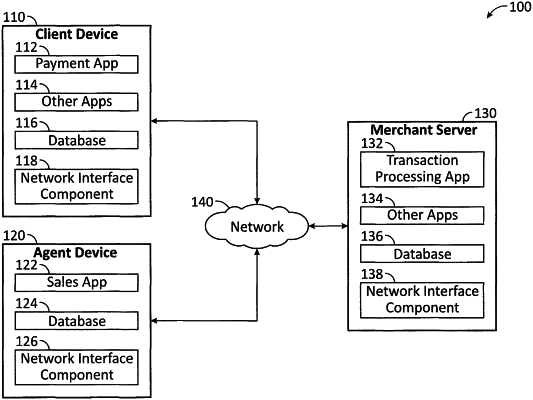| CPC G06Q 30/0631 (2013.01) [G06Q 30/0641 (2013.01); H04L 51/046 (2013.01)] | 20 Claims |

|
1. A system comprising:
a non-transitory memory; and
one or more hardware processors coupled to the non-transitory memory and configured to read instructions from the non-transitory memory to cause the system to perform operations comprising:
receiving log data for a communication session between a first computing device for a merchant and a second computing device of a consumer of the merchant;
determining, based on the log data, that the communication session includes an indication that the consumer is interested in a purchase of an item, wherein the consumer is associated with a past shopping session abandoned by the consumer;
acquiring item data for the item from a merchant inventory system of the merchant;
creating a new digital shopping cart with selectable parameters for the item based on the item data independent of the past shopping session;
generating a checkout process with a transaction processor based on the new digital shopping cart, wherein the checkout process enables the customer to choose from the selectable parameters;
determining a chat session tool to request the checkout process during the communication session;
generating an interface element for the chat session tool, wherein the interface element comprises a selectable operation to initiate the checkout process with the transaction processor; and
causing the interface element to be rendered within an interface of the second computing device associated with the communication session.
|